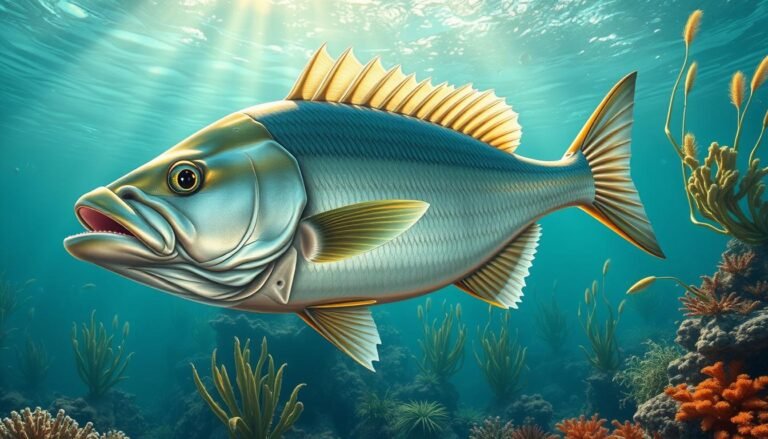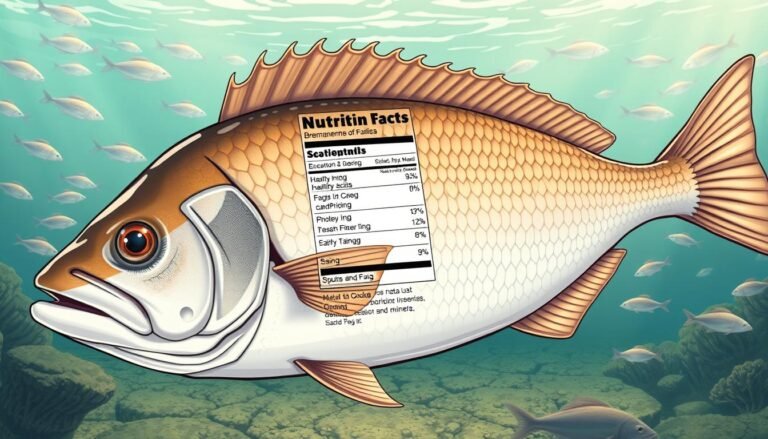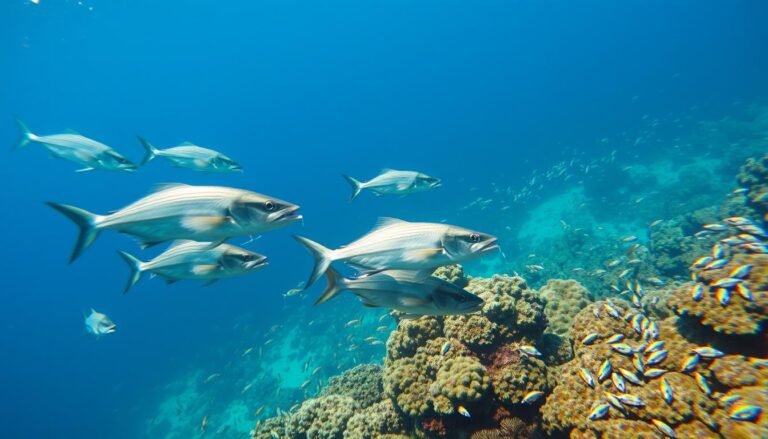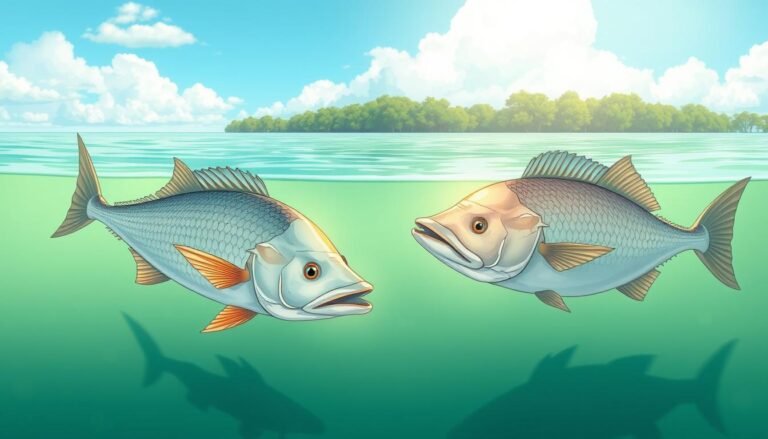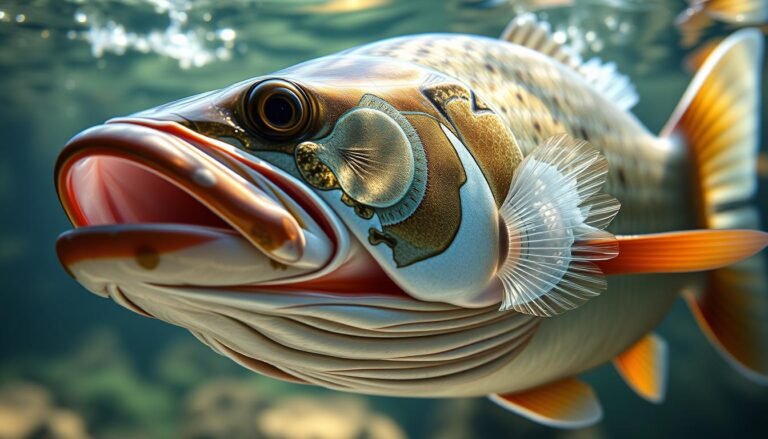The question of whether fish can experience pain has sparked intense debate among scientists and animal welfare advocates. Recent studies have shed new light on this topic, revealing that fish are capable of complex behaviours and may possess a level of sentience.
A study on cleaner wrasse demonstrated their ability to recognise themselves in a mirror, a sign of self-awareness. This breakthrough has significant implications for our understanding of animal consciousness and how we treat fish in various contexts.
Key Takeaways
- Recent research suggests that fish may be capable of feeling pain and experiencing emotions.
- The ability of fish to recognise themselves in a mirror indicates a level of self-awareness.
- Understanding fish sentience has important implications for animal welfare.
- The study of fish sentience is a growing area of research with significant potential for new discoveries.
- Recognising fish sentience could lead to changes in how fish are treated in industries such as fishing and aquaculture.
The Historical Debate on Fish Pain Perception
The notion that fish might feel pain has evolved significantly over time, from being considered a simple reflex to a complex phenomenon worthy of scientific investigation. This shift in understanding reflects broader changes in our comprehension of animal consciousness and the complex neurological processes that underlie pain perception.
Early Scientific Views on Fish Consciousness
Historically, scientists believed that fish were incapable of feeling pain due to their different brain structure compared to humans. This view was supported by the understanding that fish lack the neocortex, a part of the brain associated with complex thought and consciousness in humans. As a result, the prevailing opinion was that fish responded to harmful stimuli through reflexive actions rather than subjective experiences of pain.
Early studies on fish consciousness were limited, and the field was characterized by a lack of understanding of fish neurobiology. However, as research progressed, evidence began to emerge that challenged these initial assumptions.
Shifting Perspectives in Modern Science
Modern research has significantly advanced our understanding of fish pain science. Studies have shown that fish possess nociceptors, specialized receptors that detect painful stimuli, and exhibit behavioural responses to injury that are indicative of pain perception. The historical debate surrounding fish pain has thus given way to a more nuanced understanding, recognizing that some fish species are capable of experiencing pain and displaying complex behaviours in response to their environment.
These findings have important implications for how we consider the welfare of fish, both in natural settings and in aquaculture. As our understanding of fish sentience continues to evolve, so too does our appreciation for the need to treat these animals with care and respect.
Understanding Pain: More Than Just a Reflex
The concept of pain is multifaceted, extending beyond a simple reflex to encompass a complex interplay of physiological and emotional responses. This complexity is crucial when considering the experience of pain in animals, including fish.
Defining Pain vs. Nociception
Pain and nociception are often used interchangeably, but they represent distinct concepts. Nociception refers to the detection of harmful stimuli by sensory receptors, whereas pain is the subjective experience that follows. Understanding this distinction is vital for assessing whether fish truly feel pain.
The Components of Pain Experience
The experience of pain involves multiple components, including sensory, emotional, and cognitive elements. Research into fish sentience suggests that some species may exhibit behaviours consistent with a pain experience, such as changes in feeding habits and avoidance behaviours. These observations imply that pain in fish may not be merely nociceptive but a more complex experience.
Why Pain Recognition Matters
Recognising pain in fish is not just a scientific curiosity; it has significant ethical implications. If fish are capable of experiencing pain, this challenges current fishing and aquaculture practices. Ethical considerations come to the forefront, necessitating a reevaluation of how we treat and manage fish welfare.
Do Fish Feel Pain? Examining the Biological Evidence
To answer the question of whether fish feel pain, we must first explore their brain structure and function. The complexity of the fish brain and its ability to process sensory information are crucial in determining their capacity for pain perception.
Fish Brain Structure and Pain Processing
The fish brain is composed of several regions, each responsible for different functions. The telencephalon is a critical area that has been likened to the mammalian cerebral cortex, a region associated with processing sensory information, including pain.
The Role of the Telencephalon
The telencephalon in fish is involved in various cognitive processes, including learning and memory. Studies have shown that this region is also active when fish are subjected to painful stimuli, suggesting a role in pain processing.
Comparing Fish and Mammal Brains
While the brain structures of fish and mammals differ, there are similarities in how they process pain. Both possess nociceptors, specialized nerve receptors that detect painful stimuli. The presence of these receptors and the brain’s processing of pain signals indicate that some fish are capable of feeling pain.
| Brain Region | Function in Fish | Comparison to Mammals |
|---|---|---|
| Telencephalon | Involved in learning, memory, and pain processing | Similar to the cerebral cortex in mammals |
| Nociceptors | Detect painful stimuli | Present in both fish and mammals, indicating a conserved mechanism for pain detection |
Nociceptors and Pain Receptors in Fish
Fish possess nociceptors that are sensitive to various stimuli, including heat, mechanical pressure, and chemical irritants. These receptors are crucial for detecting potential harm and triggering a response to prevent further injury.
Neurotransmitters and Pain Response
Neurotransmitters play a vital role in transmitting pain signals within the fish brain. Substances such as dopamine and endorphins are involved in modulating the pain response, similar to their roles in mammals.
Understanding the biological basis of pain in fish is essential for appreciating their capacity for sentience and for informing humane treatment practices.
Behavioural Responses to Potential Pain Stimuli
Fish exhibit a range of behavioural responses when exposed to stimuli that could be perceived as painful, challenging previous assumptions about their sentience. This section delves into the observable changes in fish behaviour after injury, their pain-relief seeking behaviours, and how memory and learning play a role in their response to painful experiences.
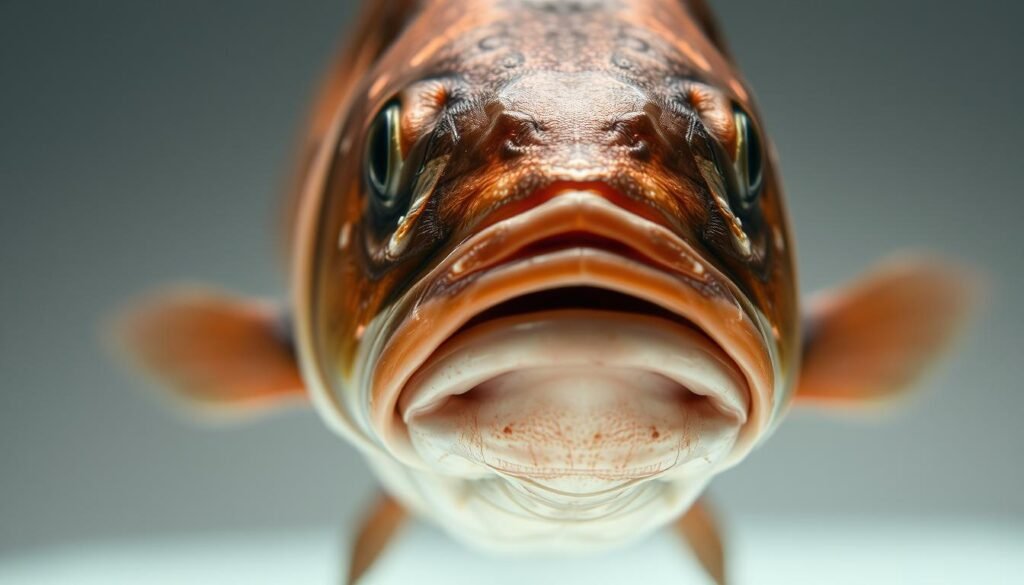
Observable Changes in Fish Behaviour After Injury
Injured fish often display altered behaviour, such as reduced activity levels and changes in feeding patterns. These changes can be indicative of a response to pain, similar to behaviours observed in other animals experiencing pain. For instance, a study on trout found that after being subjected to a potentially painful stimulus, they showed a significant decrease in their normal swimming behaviour and an increase in rubbing against the tank walls, a behaviour that could be interpreted as an attempt to alleviate pain.
Pain-Relief Seeking Behaviours in Fish
Some species of fish have been observed exhibiting pain-relief seeking behaviours. For example, certain fish will rub against surfaces or engage in other specific behaviours that appear to be aimed at reducing discomfort or pain. This behaviour is reminiscent of pain-relief actions seen in mammals and suggests a level of sentience in fish that was previously underappreciated.
Memory and Learning Related to Painful Experiences
Fish are capable of memory and learning related to painful experiences, which further supports the notion that they are sentient beings. Research has shown that fish can learn to avoid stimuli associated with pain, demonstrating an ability to recall and respond to potentially harmful situations. This capacity for learning and memory in the context of pain underscores the complexity of their behavioural responses.
In conclusion, the behavioural responses of fish to potentially painful stimuli, including changes after injury, pain-relief seeking behaviours, and their ability to learn from painful experiences, collectively suggest that fish are indeed capable of feeling pain. This understanding has significant implications for how we treat and manage fish welfare, particularly in commercial fishing and aquaculture practices.
Groundbreaking Studies on Fish Sentience
The notion that fish can feel pain has gained substantial scientific backing, thanks to several groundbreaking studies in the field of fish sentience. These studies have not only deepened our understanding of fish cognition but have also raised important questions about their welfare.
The Landmark Research of Dr. Victoria Braithwaite
Dr. Victoria Braithwaite’s work has been pivotal in demonstrating that fish can feel pain. Her research showed that fish possess the necessary neural mechanisms to experience pain, challenging the long-held view that they do not suffer as mammals do. Her findings have significant implications for how we treat fish in commercial and recreational fishing contexts.
Zebrafish Studies and Their Implications
Studies on zebrafish have further contributed to our understanding of fish sentience. These studies have shown that zebrafish can experience stress and exhibit complex behaviours when subjected to painful stimuli. The use of zebrafish as a model organism has provided valuable insights into the mechanisms of pain perception in fish, highlighting the similarities between fish and mammalian pain responses.
| Study | Key Findings | Implications |
|---|---|---|
| Dr. Victoria Braithwaite’s Research | Fish possess neural mechanisms for pain | Challenges traditional views on fish pain |
| Zebrafish Studies | Zebrafish experience stress and complex behaviours | Highlights similarities with mammalian pain responses |
Recent Scientific Breakthroughs
Recent years have seen significant breakthroughs in our understanding of fish sentience. Advances in neurobiology and behavioural studies have provided a more nuanced view of fish cognition. For instance, research has shown that fish are capable of complex behaviours such as problem-solving and social learning, further supporting the notion that they are sentient beings.
These groundbreaking studies collectively contribute to a growing body of evidence that fish are capable of feeling pain and suffering. As our understanding of fish sentience continues to evolve, it is likely to have profound implications for fisheries management, aquaculture, and conservation practices.
The Counter-Arguments: Why Some Scientists Remain Sceptical
Despite growing evidence of fish sentience, scepticism persists, driven by concerns over anthropomorphism and the complexity of animal consciousness. While some researchers acknowledge the behavioural responses of fish to potentially painful stimuli, others argue that these reactions may not necessarily equate to the subjective experience of pain as understood in humans and other mammals.
Differences Between Fish and Mammalian Pain Systems
One of the primary counter-arguments centres on the significant differences between the pain processing systems of fish and mammals. Fish lack the neocortex, a region of the brain associated with complex processing in mammals. This has led some scientists to question whether fish possess the neurological machinery necessary for pain perception.
| Aspect | Fish | Mammals |
|---|---|---|
| Brain Structure | Lack neocortex | Presence of neocortex |
| Nociceptors | Present, respond to harmful stimuli | Present, respond to harmful stimuli |
| Pain Processing | Less understood, potentially different | Complex processing involving multiple brain regions |
Alternative Explanations for Fish Responses
Another argument posits that the observed behaviours in fish could be explained by mechanisms other than pain perception. For instance, some researchers suggest that the responses to injury or harmful stimuli could be mere reflexes rather than indicative of a subjective experience of pain.

The Anthropomorphism Debate
The attribution of human characteristics or behaviour to non-human entities, including animals, is known as anthropomorphism. Some scientists caution against anthropomorphism when interpreting fish behaviour, arguing that it may lead to an inaccurate understanding of their experiences.
By examining these counter-arguments, we gain a more nuanced understanding of the complexities surrounding fish sentience and the ongoing scientific debate.
Fish Welfare in Australian Waters: Local Research and Perspectives
Understanding fish sentience is crucial for improving fish welfare in Australian waters, and local studies have made significant strides in this area. Research in Australia has contributed substantially to the global understanding of fish sentience, with implications for both fishing regulations and welfare considerations.
Australian Studies on Fish Sentience
Australian researchers have conducted several key studies on fish sentience, focusing on the biological and behavioral aspects of pain perception in fish. For instance, studies have shown that fish exhibit behavioral changes in response to painful stimuli, such as avoidance behaviors and altered feeding patterns. These findings have been instrumental in shaping our understanding of fish welfare.
- Research on nociceptors and pain receptors in fish has provided insights into their capacity to feel pain.
- Studies on neurotransmitters and pain response have further elucidated the complex pain processing mechanisms in fish.
Current Fishing Regulations and Welfare Considerations
Fishing regulations in Australia are evolving to incorporate better welfare considerations for fish. The Australian Fisheries Management Authority has implemented guidelines that aim to minimize fish suffering during capture and handling. Some of the measures include:
- Improved fishing gear designs to reduce bycatch and injury.
- Mandatory reporting of fishing practices to monitor welfare compliance.
These regulations reflect a growing recognition of the need to balance human fishing activities with ethical treatment of fish.
Unique Challenges for Australian Marine Ecosystems
Australian marine ecosystems face unique challenges, including climate change impacts and habitat degradation. These challenges can exacerbate stress on fish populations, making welfare considerations even more critical. Research is ongoing to understand and mitigate these impacts.
Ethical Implications: Rethinking Our Relationship with Fish
As we gain a deeper understanding of fish sentience, we are compelled to reevaluate our relationship with these aquatic creatures. The acknowledgment of pain perception in fish has significant ethical implications, suggesting a need for more humane practices in fishing and aquaculture.
Humane Fishing and Aquaculture Practices
Implementing humane practices in fishing and aquaculture is crucial for reducing the suffering of fish. This can be achieved through various methods, including improving handling practices and minimizing stress during capture.
Reducing Suffering in Commercial Fishing
Commercial fishing operations can adopt more humane practices, such as using gear that minimizes bycatch and promotes quick and humane killing methods. According to a study on animal sentience and welfare, adopting such practices can significantly reduce fish suffering in commercial fishing.
Ethical Considerations for Recreational Anglers
Recreational anglers also have a role to play in promoting fish welfare. This includes using barbless hooks, handling fish gently, and avoiding practices that cause unnecessary stress or injury.
Balancing Human Needs and Fish Welfare
Balancing human needs with fish welfare is a complex challenge. It requires considering the socio-economic impacts of changing fishing practices while ensuring the humane treatment of fish. Sustainable fishing practices that prioritize fish welfare can also contribute to the long-term sustainability of fish populations.
Future Directions for Policy and Practice
Future directions for policy and practice will likely involve more stringent regulations on fishing and aquaculture to ensure fish welfare. This could include the development of new technologies and practices that further reduce fish suffering.
Conclusion: Where Science and Ethics Meet on Fish Pain
The recognition of fish sentience brings together science and ethics, highlighting the need for a more compassionate approach to fish welfare. As research continues to uncover the complexities of fish cognition and pain, the imperative to act with empathy and responsibility grows. The evidence supporting fish pain perception necessitates a reevaluation of current practices in fishing and aquaculture, urging policymakers and industry stakeholders to adopt more humane and sustainable methods.
By integrating scientific understanding with ethical considerations, we can work towards a future where the treatment of fish is guided by both knowledge and compassion. This convergence of science and ethics on the issue of fish pain is crucial for developing policies and practices that balance human needs with the welfare of fish, ultimately promoting a more sustainable and ethical coexistence.
